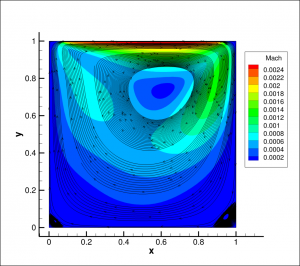Kentucky Aerothermodynamics and Thermal-response System (KATS), has been developed over the past few years. Using a C++ foundation, KATS uses an implicit first-order backward Euler time integration to solve for modified conservation equations accounting for chemical behavior within the gas and material. These equations are used to characterize the behavior of the flow in and around the body at hand with high fidelity. KATS has implemented the following features:
- Reads 3D Unstructured grid in CGNS format
- ParMETIS for domain decomposition
- MPI for inter-processors communications
- PETSC Krylov subspace method as linear solver for iteration
- Schemes include Steger-Warming flux-vector splitting, AUSM+up, Roe, etc.








